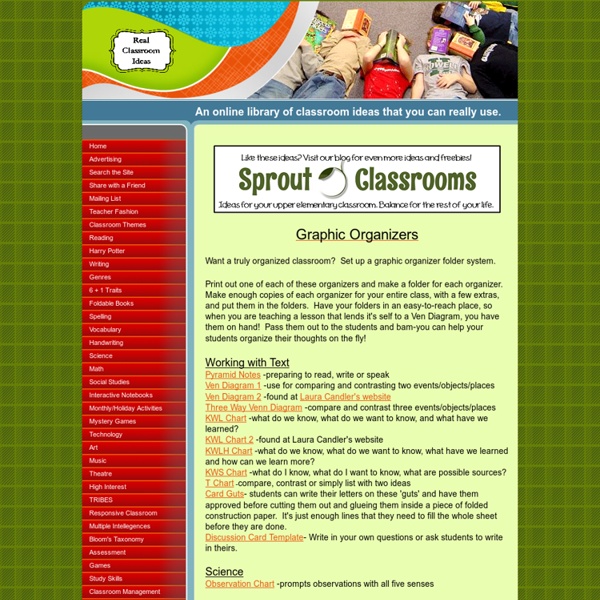Graphic Organizers
Graphic Organizers Want a truly organized classroom? Set up a graphic organizer folder system. Print out one of each of these organizers and make a folder for each organizer. Make enough copies of each organizer for your entire class, with a few extras, and put them in the folders. Working with TextPyramid Notes -preparing to read, write or speakVen Diagram 1 -use for comparing and contrasting two events/objects/placesVen Diagram 2 -found at Laura Candler's websiteThree Way Venn Diagram -compare and contrast three events/objects/placesKWL Chart -what do we know, what do we want to know, and what have we learned?
Riddles & Brainteasers - Kids Pages - National Institute of Environmental Health Sciences
Scientists get to solve puzzles every day, because science and research involve finding solutions from the clues that we are given. Just like with brainteasers (or brain teasers) and riddles, the answers to science mysteries are not always easy to see at first. With time and effort, they eventually become clear. But before solving the hundreds of brainteasers and riddles below, why not learn more about your brain by viewing the parts of the brain and what they do. And then have some fun with all our brainteasers and riddles below. Palindromes A palindrome is a word, phrase, verse, or sentence that reads the same backward or forward. Not So Hard Riddles Warm up with some easy riddles. Tuff Stuff Riddles Some of these riddles are difficult Rebus Puzzles Word picture puzzles Frog Leap Brainteaser Help six little frogs get across their pond. Puzzling Proverbs New twists on old sayings Puzzling Numbers Numbers games Double-Speak Proverbs These old sayings have been rewritten using big words.
Related:
Related:



